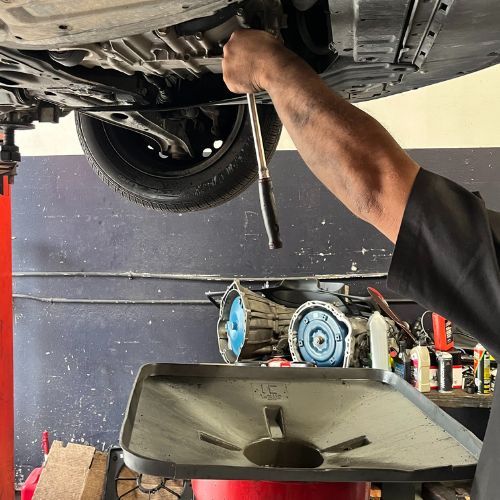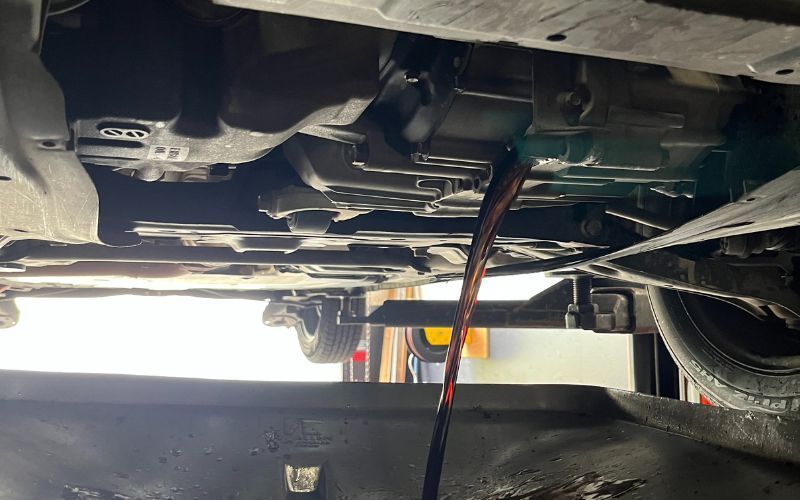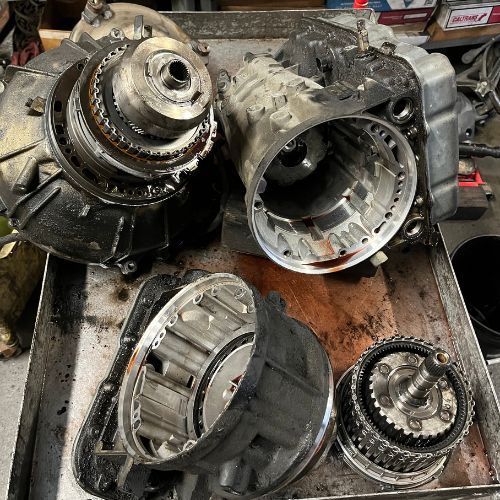What Is a Transmission Service?
Many people do not realize that your car runs on several fluids. These fluids cool and lubricate the parts that make your vehicle run smoothly.
One of these fluids is the transmission filter, which catches metal shavings and other debris from the lubricating fluid. It also prevents them from being sent back into the fluid.

What is Entailed in a Transmission Service?
Regardless of whether you have an automatic or manual transmission, regular service keeps it running smoothly. A trained technician will add a cleaning solution that dissolves the varnish and sludge in your transmission fluid. Then a professional grade machine removes the old fluid and replaces it with new, conditioned transmission fluid.
The transmission is vital for your car's performance and safety. Without it, you'd have a loud and ineffective machine under the hood that won't get you anywhere. The best way to keep your transmission in good condition is to schedule a service appointment every 30,000 miles, or as indicated by the manufacturer. This service helps prevent problems and extends the life of your transmission. You should also follow the recommended service intervals if you're a heavy driver or drive in areas with extreme weather conditions, as these cause more wear and tear.
A
transmission flush involves removing all of the old fluid and replacing it with fresh, new fluid. It will also include cleaning the transmission pan gasket and drain plug and checking the filter. A well-maintained transmission will run smoothly and transmit energy more effectively to other car components, thereby improving your vehicle's overall performance and extending its lifespan. By following your transmission maintenance schedule, you can avoid the costs of expensive transmission repairs down the road. Contact us to schedule your next
transmission service at Capistrano Transmission & Auto Repair today
Changing Your Transmission Fluid
In this service, the transmission fluid is drained and replaced with new premium transmission fluid. The technician may also remove the transmission pan, drain bolt, replace the pan gasket and filter, and fill the system with new fluid. This type of service usually is recommended at 100,000-mile intervals.
When a mechanic changes the transmission fluid, they should make sure it is the right vehicle specific type. They should also change the transmission filter and evaluate the condition of the drain plug and gaskets. Inspecting the old fluid in the transmission pan can be helpful as well. The fluid should be bright red and clear without any particles floating in it. Large chunks of metal in the fluid can indicate severe damage to the transmission and need immediate attention from a transmission repair shop. The technician should use the red-handled dipstick to check the transmission fluid level and ensure it is at the proper amount. Old fluid can cause the transmission to overheat and not shift correctly.

How Long Does It Take to Change Transmission Fluid?
Your vehicle's transmission is a complex piece of machinery that lubricates and helps transfer engine power to the wheels. As it works to move your car forward, it becomes worn out over time. Changing transmission fluid is an economical way to keep the system lubricated, cool and moving smoothly.
When you are ready to change the fluid, park your vehicle in a safe area and apply the parking brake. If you do not have a jack, you can drive the vehicle up on steel wheel chocks that are designed to support a vehicle and have depressions for the tires to prevent shifting or movement while you work on it.
Start by draining the old fluid. You will need to remove the transmission fluid pan, unscrew the drain plug and allow the fluid to flow out. Inspect the drain plug for wear and consider replacing it if necessary. You will also want to evaluate and replace the transmission filter, which is generally easy to do.
Then, refill the transmission with new fluid and reinstall the drain plug and fill plug. Be sure to use the exact type of transmission fluid recommended by your manufacturer and check the level with the dipstick while the engine is running (the dipstick will usually provide a hot and cold reading).
Change the Transmission Filter
Most modern automatic transmissions have a filter that keeps foreign material out of the transmission fluid. It's important to change this filter on a routine basis to keep your transmission running at optimal capacity.
A trained technician will drain the old fluid from your transmission, clean out the filter and replace it with fresh premium transmission fluid. This helps improve your transmissions shift quality and increase its lifespan. A faulty transmission is expensive to repair, so it's best to keep it healthy.
The technician will also change the pan gasket, which is a thin seal that prevents transmission fluid leaks from the transmission pan. Changing this is easy and can be done in about an hour. For some cars, however, like many Hondas need the transmission to be completely taken apart in order to replace the filter. The technician will remove the drain plug, drain all the old fluid into a plastic container and then put everything back together. This is a routine part of a Transmission Service and should be done every 30,000 miles or two years.
When and How Often to Change Transmission Filter
A transmission filter keeps pollutants from contaminating the transmission fluid. If a filter isn't doing its job properly, the fluid will become too dirty to function effectively, and may eventually burn, requiring expensive transmission repairs.
A rattling sound that can't be explained by other reasons is a good sign that the transmission filter needs to be replaced. A rattling noise from the transmission could also indicate that a gasket or seal has been dislodged or misaligned and needs to be replaced or tightened. The recommended interval for changing the filter varies depending on your vehicle. For the best protection, it is important to change the transmission filter every 30,000 miles or every two years. Your owner's manual will tell you how often to change your transmission filter, or a mechanic can do it for you during a routine service appointment.
To change the transmission filter, the mechanic will drain the transmission fluid and remove the transmission pan. Then he will replace the transmission filter, and install a new transmission fluid pan gasket if necessary. Then he will fill the transmission to the manufacturer's recommendations and add the appropriate amount of fresh transmission fluid.
The mechanic will test the fluid to make sure it is clean, and that the transmission is operating normally. He will also inspect the filter to make sure it is in good condition, and he will check the sludge level in the transmission pan for signs that the system needs cleaning.




